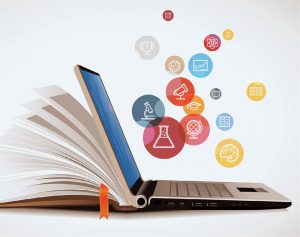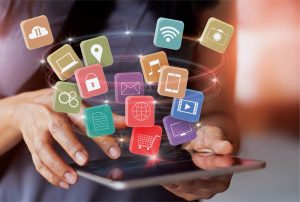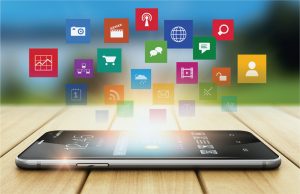To Err is Human, To Learn Divine
Feature Story – By Mrigank Shail
Private and public institutes are struggling to keep their employees accredited and compliant. In today’s fast-paced world full of distractions and online stimulation, it is challenging to have a learner sit down in one spot, continually absorb the material and remain focused on a topic for more than 20 minutes.
 Sales and medical affairs representatives lag on their compliance training because they are either bombarded with field work or cannot spare two or three hours a week to complete the mandatory compliance courses. Having reps take long training, learning or accreditation courses decreases work productivity, cuts into business hours, increases budget spending and does not guarantee full adoption, compliance or subject matter comprehension.
Sales and medical affairs representatives lag on their compliance training because they are either bombarded with field work or cannot spare two or three hours a week to complete the mandatory compliance courses. Having reps take long training, learning or accreditation courses decreases work productivity, cuts into business hours, increases budget spending and does not guarantee full adoption, compliance or subject matter comprehension.
In this article, I share my condensed findings from comprehensive three-month research on microlearning.
Why Don’t Reps Remember?
Psychologist Hermann Ebbinghaus conducted some of the earliest investigations on memory, recall and spaced or microlearning. The 1880 Ebbinghaus curve – or “forgetting curve” – theorizes that memory retention decreases over time. It suggests that we lose relevant information through a time when there is no attempt to retain it. A typical “forgetting curve” hypothesizes that learners tend to forget more than 50 percent of their newly learned material 20 minutes immediately after the lesson ends.
How Can I Make My Training Content Memorable?
Recalling helps add more neuronal synapses and strengthens memory for longterm storage. Memory is not a single concept of the mind. It is made up of many systems that have various working processes linked to different brain anatomies. Research suggests that creating and linking new neurons together form memory.
 A specific memory is created by the shape, pattern and allocation of neurons in different clusters within the brain. Over time, these patterns can be transferred from short-term memory regions to longterm memory regions for indefinite storage, by the process of reintroduction and recall. Rehearsing specific memories promotes additional neuronal synapses to the neuronal cluster and can change, upgrade or reinforce the memory.
A specific memory is created by the shape, pattern and allocation of neurons in different clusters within the brain. Over time, these patterns can be transferred from short-term memory regions to longterm memory regions for indefinite storage, by the process of reintroduction and recall. Rehearsing specific memories promotes additional neuronal synapses to the neuronal cluster and can change, upgrade or reinforce the memory.
Traditional training methods demand learners to digest tons of material in one lengthy session. Microlearning is relatively small, focused learning units consisting of condensed learning activities, available on multiple devices.
Microlearning is achieving its full potential in recent decades due to the Internet, mobile devices and cloud computing.
The short bursts of lessons are also filled with interactive multimedia. It can be used for informal training or to teach extensive, complex material broken down into manageable pieces. Typically designed and delivered in rich media formats, microlearning is a learner-centric approach that makes training available on multiple smart devices.
But Does It Work in the Field?
A Journal of Educational Psychology study showed that people learn and perform better when they can access short and engaging content at their own pace, instead of vast complex information in one session. Though the concept of microlearning has been around for a long time, it is achieving its full potential in recent decades due to the Internet, mobile devices and cloud computing.
 The hint of mobile education began with the introduction of the personal computer. In the 1990s, the World Wide Web provided unlimited access to ubiquitous knowledge and learning material. Marrying the Internet and personal computers with Moore’s Law, which states that the number of transistors on a microprocessor chip doubles every two years, led to an exponential increase in computerlearning speed and performance in the 2000s. This merger gave rise to high-speed Internet, mobile devices, social media, mobile applications and the Internet of Things (IoT) prevalent in the 2010s.
The hint of mobile education began with the introduction of the personal computer. In the 1990s, the World Wide Web provided unlimited access to ubiquitous knowledge and learning material. Marrying the Internet and personal computers with Moore’s Law, which states that the number of transistors on a microprocessor chip doubles every two years, led to an exponential increase in computerlearning speed and performance in the 2000s. This merger gave rise to high-speed Internet, mobile devices, social media, mobile applications and the Internet of Things (IoT) prevalent in the 2010s.
Equipping learners with material in different formats empowers them to study and later strengthens their knowledge base. As the resource library is online, updating old content and uploading new content is in realtime. Imagine updating learning material instantly on every device simultaneously. Managers can push out the most recent versions of brochures, content and collaterals to their reps easily while being industry compliant.
With a cornucopia of media formats at its fingertips, microlearning on mobile applications engages and supports diverse learning styles. Introductory learning material might be long and comprehensive, but micro-lessons would provide summaries for each item in the form of a checklist or a short, recorded subject matter-expert video, which users can easily manage and reference while on the go.
Makes Sense, but Prove It
Reintroducing the lessons in smaller increments helps learners retain knowledge for an extended time. Ample research data supports the claim that memory reactivations can prevent memory impairment. Through a process called cellular consolidation, memory undergoes protein synthesis, leading to neuronal changes that alter the memory to long-term memory.
With the help of personal mobile devices and applications, learners can learn at their own pace at any location. For example, several popular language apps are now using the concept of microlearning to teach users new languages.
With lessons stored on online servers, learners can pause and resume their activities. With the added capability of moving back and forth between lessons, learners can improve their retention scores by repeating the previously completed lessons in shorter bursts. The process of rehearsing the material creates stronger neural network connections within the brain and conveys the memory from short-term to long-term. By repeatedly using microlearning on mobile applications, learners can see significant improvement in their retention level and concurrently see benefits in their work performance.
Mobile technology can be used to engage learners outside of the classroom if implemented well.
How Does This Affect the Personal Experience?
A relaxed rep is a happy rep. In modern society, mental fatigue is one of the most significant causes of burnouts, leading to poor work performance and reduced job satisfaction.
Mental fatigue is a person’s inability to efficiently complete cognitive tasks. It causes a drop in cognitive processes such as planning, executive attention, sustained attention, goal-directed attention, alternating attention and divided attention. We give the brain a limited amount of fuel in the form of glucose or neurotransmitters. If we do not give our brain time to rest and recalibrate, the neurons fail to fire and cannot broadcast signals. This crash leads to synaptic fatigue or short-term synaptic depression.
 Microlearning prevents overstimulation or cognitive exhaustion via multiple timespaced lessons. With the arrival of smartphones and other mobile devices, microlearning can be set outside of traditional classrooms with higher adoption rates. Reps can finish a quick experience, grasp the key concept and take a break. This method gives time for the learned material to move from short term to long-term memory. Aided by mobile applications, microlearning can efficiently decrease mental fatigue and concurrently increase work satisfaction along with personal well-being.
Microlearning prevents overstimulation or cognitive exhaustion via multiple timespaced lessons. With the arrival of smartphones and other mobile devices, microlearning can be set outside of traditional classrooms with higher adoption rates. Reps can finish a quick experience, grasp the key concept and take a break. This method gives time for the learned material to move from short term to long-term memory. Aided by mobile applications, microlearning can efficiently decrease mental fatigue and concurrently increase work satisfaction along with personal well-being.
What About True Happiness?
Mobile devices have enriched and become an intricate part of our lives. Technology can be used to engage learners outside of the classroom if implemented well. Learners can choose what, when and how they learn.
As a self-access online learning platform, learners can take any microlesson an infinite number of times. They can continually self-assess their performance, with the option to return to their previous microlessons and improve their score through a refresher course.
In the past, training was a once-and-done/check-the-box event. Shifting regulations toward value-driven conversations means that assessing training completion with exams is not enough. Learners need to be able to effectively communicate the clinical evidence story, and this starts with effective training.
Leveraging microlearning through mobile technology opens up the opportunity to track learning data and create variable-metric-based synchronized evaluation systems. Combined with user metrics, microlearning can create an algorithmic platform where lesson plans can be tailored toward self-improvement.
Conclusion
The use of microlearning via a mobile application can enhance the learning and training experience for the learner. It must be professionally organized and implemented like a learning syllabus. To fully take advantage of microlearning on mobile applications, we must follow a neuroscientific academic guideline with the concepts of short and long-term memory.
Mrigank Shail, M.D., is implementation specialist at ACTO. Email him at
mrigank@actoapp.com.








